
When it comes to building or upgrading to custom packaging solutions, there’s no one-size-fits-all solution. One of the biggest decisions manufacturers face is whether to invest in a fully integrated system or build a modular line with individual components that work together.
Fully integrated lines often promise high-speed automation and streamlined processes, but they also come with high upfront costs, long lead times, and limited flexibility. Modular systems offer customization and scalability, but they’re sometimes misunderstood or overlooked due to concerns about complexity or compatibility.
So, which system is right for your operation? Let’s look at the key differences between modular and integrated packaging machinery to help you decide which approach fits your production goals, facility, and long-term plans.
What Is a Fully Integrated Packaging Line?
Fully integrated packaging solutions are a pre-configured, all-in-one system in which every machine is designed to work seamlessly with the others. These systems are often developed by a single supplier and built to operate as a cohesive unit from product input to final packaging.
A few key benefits of a fully integrated line include:
- Seamless Automation: Machines communicate with each other through centralized controls.
- High-Volume Efficiency: Designed for long runs of the same product with minimal manual intervention.
- Consistent Throughput: Ideal for operations that prioritize speed and volume over customization.
However, this level of integration comes at a cost. Fully integrated lines typically require:
- Higher upfront investment in equipment, controls, and installation.
- More complex customization, especially when product formats change.
- Longer lead times and installation windows.
- Less flexibility if you need to swap out components or scale incrementally.
For some manufacturers, these drawbacks may outweigh the benefits.
What Is a Modular Packaging Line?
A modular packaging line is made up of independent components, like labelers, fillers, cappers, conveyors, and coders, that can be configured, added to, or replaced based on your unique needs. Modular systems give you the flexibility to build your line piece by piece instead of relying on a single, pre-built solution.
Modular packaging machinery is a great option because of these features:
- Custom Configuration: Build your line around your workflow, not the other way around.
- Easy Upgrades: Add new equipment as needed without overhauling your system.
- Scalability: Start with the essentials and grow your line as demand increases.
- Simplified Maintenance: Swap out individual components for service or upgrades without shutting down your entire line.
Modular systems are especially valuable for facilities that run multiple SKUs, seasonal products, or frequent changeovers, where adaptability is a priority.
The Real Differences Between Modular and Integrated Systems
Understanding the trade-offs between modular and integrated systems is key to making an investment that fits your current needs and supports your long-term operational strategy.
While both approaches have their place in packaging environments, the right choice often comes down to how your production line operates today and where you want it to go tomorrow.

Here’s a deeper look at how the two approaches compare across key decision-making factors:
Cost
Integrated: Fully integrated systems typically require a significant upfront investment in both equipment and installation. While they may deliver strong long-term efficiency for high-volume operations, the initial cost can be a barrier for smaller manufacturers or companies looking to scale gradually.
Modular: Modular systems allow you to invest incrementally, adding components as needed, rather than purchasing everything at once. This reduces capital risk and provides more financial flexibility, especially for manufacturers introducing new product lines or expanding operations over time.
Flexibility
Integrated: These systems are designed for streamlined, repetitive tasks, making them ideal for running large batches of a single product. However, they are often rigid in structure and less adaptable when new product types or packaging formats are introduced.
Modular: Modular packaging lines shine when flexibility is a priority. You can easily swap out components, reconfigure line layouts, or add new capabilities to accommodate a wide range of product SKUs, seasonal packaging, or last-minute customer requirements.
Maintenance and Downtime
Integrated: Because integrated systems are tightly connected, a failure in one part of the line can affect the entire system. Maintenance or repairs may require a full shutdown, resulting in extended downtime and lost productivity.
Modular: With modular systems, individual machines operate independently. If one component needs service, it can be addressed without halting the rest of the line, keeping your production moving and minimizing disruption.
Customization
Integrated: Customizing an integrated system after installation can be costly and complex, as changes often affect multiple components. This can be a challenge for manufacturers whose product lines evolve quickly or require custom packaging solutions.
Modular: Modular lines offer more agility when it comes to customization. Whether it’s adjusting label placement, integrating a new printer, or adapting to a new container shape, you can modify one part of the system without overhauling the rest.
Space and Installation
Integrated: These systems are typically larger and require significant planning, layout coordination, and infrastructure upgrades during installation. For manufacturers with limited floor space or older facilities, this can be a major hurdle.
Modular: With a smaller footprint and greater flexibility, modular systems are easier to fit into existing spaces. Installation is faster and less invasive, allowing you to get up and running quickly, even in space-constrained environments.
When a Modular System Makes More Sense
Modular packaging machinery is a strategic advantage for the right kind of operation.
Are you launching a new product line? Modular systems let you start small and expand as demand grows.
Do you handle frequent packaging changes or custom orders? You’ll benefit from easy changeovers and component flexibility.
Running a mid-sized operation with a focus on agility? Modular setups give you control and responsiveness without locking you into a rigid system.
For many manufacturers, especially in food, beverage, personal care, and specialty goods, modular equipment delivers a better return on investment because it adapts as the business evolves.
Why Manufacturers Trust Our Modular Systems
At Pack Leader USA, we design our modular equipment to be easy to use and extremely efficient. Our labeling and packaging machinery are built to integrate seamlessly into existing lines or serve as the foundation for growing operations.
.jpg?width=900&height=450&name=Blog_PackLeaderUSAPackagingLine_900x450%20(1).jpg)
What makes our systems different?
- Easy Setup and Fast ROI: Get up and running quickly without complicated integration.
- Quick Changeovers: Reduce downtime and keep production flexible as SKUs or formats shift.
- Compatibility: Our equipment works with a wide range of containers, labels, and coding equipment.
- Strategic Support: Our team helps you plan for growth and ensure every packaging machinery serves a purpose on your line.
Whether you’re adding a hot stamp printer to an existing labeler or building a multi-stage system from scratch, our modular equipment is ready to scale with your business.
Match Your Packaging Line to Your Growth Goals
Choosing between modular and integrated packaging solutions is a strategic decision. The right packaging line structure can help you meet production goals, reduce downtime, and position your business for long-term success.
For many growing manufacturers, modular systems deliver the flexibility, scalability, and cost-efficiency needed to stay on track.
If you’re not sure which option is right for you? Let’s talk. Our team at Pack Leader USA is here to help you evaluate your options and find custom packaging solutions that best fit your production line and your goals.
.webp?width=200&height=114&name=2x-Packleader-logo-large%20(1).webp)

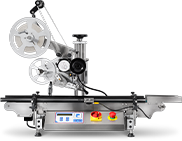
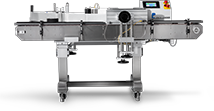
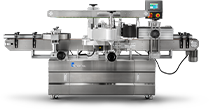
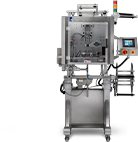
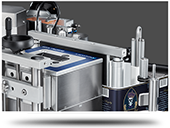
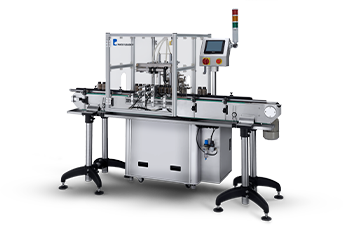
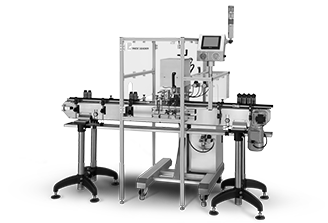
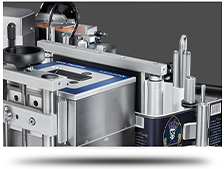





.webp?width=360&name=2x-color-logo%20(1).webp)